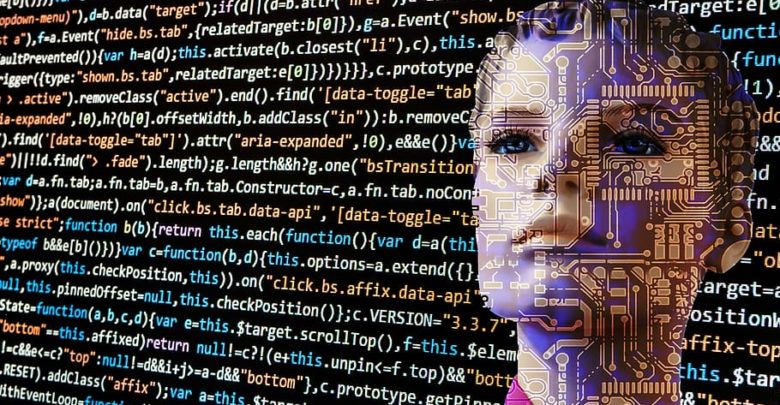Emerging TechnologiesInnovation
From Mona Lisa to Machine Learning – Artificial Intelligence and Art

The following piece is penned by Subhash Bhutoria, Board Chair, Metacept. This article was first published on the ‘Art Law India‘ blog and can be accessed here.
When Christie’s auctioned the Portrait of Edmond Belamy at forty times its estimated price, it caught the much-needed attention for the art created by artificial intelligence. This unprecedented sale has also inspired a discourse on the legality of such artworks and in general, the involvement of AI and machine learning quite like an individual. Among others, conferring the status of a personality to a machine or its artificial intelligence is a legal conundrum, which adds a new paradigm to the jurisprudence. In the creative domain, the cognitive ability of machines is getting noticed, and, as Christie’s’ auction showcased, this creativity is also of immense worth. This transition of the technology from generative to being creative, certainly renders for more meaningful involvement of the ‘intelligent agents’ in the law. The law, as it stands today, posits a challenge to ownership and enforcement of rights in a work created by artificial intelligence.
The artwork is a subject matter of copyright and is protected, provided its original. The rights including the right to communicate to the public and to reproduce or adapt are granted to the artist. The law, however, does not define who is or can be construed as an artist, particularly, if a non-natural person can also be considered as an artist. While determining whether a monkey can sue a human for copyright infringement, the US Supreme Court observed that the US Copyright laws do not extend to animals. The Court observed that participation in a society brings rights and corresponding duties. One must pay taxes on the royalty agreement for the use of the copyright images. Indeed, an animal or any other inanimate object would lack this capability, and ideally, they would not be considered as natural persons. The Court also dismissed the arguments of PETA which claimed Naruto’s ‘Next Friend’ on the basis that a) PETA could not establish its significant relationship with Naruto and b) law does not allow animals to be represented through any ‘Next Friend’. Indian courts too do not recognize the ‘Next Friend’ concept beyond minor or person with unsound mind. Having said so, Indian courts have recognized personality in a deity installed in public place [1], animals [2], and even river [3] and have bestowed a Loco Parentis responsibility on the citizens. Particularly, in the case of Deities / Idols, the Courts have appointed the manager of deities’ property, as its guardian. Based on this analogy, even artificial intelligence can manage and protect its proprietary rights in the artwork, which it has created, through its developer or manager.
However, the prerequisite of ‘ownership’ would still remain unanswered. An AI generates its artwork by randomly compiling the pre-curated artworks, through an algorithm. Keeping in mind that the pre-curation process can involve a great deal of artist’s judgment, skill, and labor, the artist’s contribution can tantamount to join authorship in the work, in which case, the artist can claim proprietary rights in the work, though jointly with the AI. In case AI is considered an anonymous author, in view of the presumption existing under most copyright laws, the publisher can be considered the owner of the work. While it may still fall under a grey area, it seems plausible to assign co-ownership to the artist and the publisher, such as the gallery, in the AI-generated artwork. Recently, a Chinese Court has observed that an article written by an AI qualifies as an original work and thus the Court had granted relief to the Plaintiff, which had published the said article, against infringement of copyright in the said work.
The requirement of novelty or originality in an AI-generated work is largely not disputed. However, the factum of authorship and ownership in the work continues to be in a conundrum. In a landmark decision involving copyright infringement of an AI-generated work [4], the Beijing Internet Court had observed that even though an AI-generated work is original, it cannot be protected under the Copyright laws as the said work is not created by a natural person. Gleaned from this observation of the Beijing Internet Court, an AI-generated work may never be protected under the Copyright laws, unless the copyright law is extended to work created by a non-natural person or in other words, the mandatory requirement of a natural person as the author of the work may be waived off. Regarding ownership, in the given situation where AI per se does not qualify as a ‘natural person’, joint ownership of developer, user-artist, and publisher seems more feasible than a guardian-minor or principal-agent relationship.
The capacity to learn, process, and reason, brings artificial intelligence at par with human resources, and thus AI is considered a plausible alternative. However, AI lacks ‘human-ness’, which is a prerequisite for granting ownership rights in the artwork. The blurry line would continue to exist due to this rigid approach of human authorship. As a consequence of the lack of authorship, the AI-generated artwork would enter the public domain immediately upon its creation, leaving no commercial gains for its human creators and publishers. The use of technology such as augmented reality and machine learning has already made its way in the art business and is questioning the conscience of law.
[1] Yogendra Nath Naskar V. Commissioner Of Income-Tax, 1969 SCR (3) 742 [2] Karnail Singh & Ors. V. State, Judgment dated 31.05.2019 by Rajiv Sharma, J. of P&H High Court. [3] Salim v. State of Uttarakhand, Writ Petition (PIL) No.126 of 2014; [4] Beijing Feilin Law Firm v Baidu Corporation, No 239 [2019], Civil First Instance, Beijing Internet Court, 25 April 2019.




